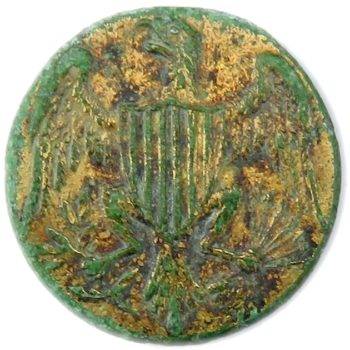
George Washington’s Family Crest W/ A 13 Stripe Shield
************* ************* *************
I do not know when exactly George Washington thought of using an eagle for the symbol on his military uniform buttons; I just know that here is some sufficient evidence that it was his idea to use the eagle symbol and have them made early on in the war for his uniform. Since there is some signature evidence of James Trenchard in the button there could be some reasonable speculation it was his artistic design as well. In most likely hood he would have ordered a full set of yellow metal (Gilt) Eagle buttons to fully outfit a uniform. Since a special order it probably was a simple two button cast mold that could offer both a coat and cuff size. Since, the coat and cuff version were found in places Washington frequented in 1776, there could be a reasonable date during or just following the Siege of Boston in 1775-1776. Below is the research facts i found that allowed me to present a reasonable theory as to why George Washington chose the Eagle as his military symbol during the war, and then again afterward during his inauguration as President of the United States.

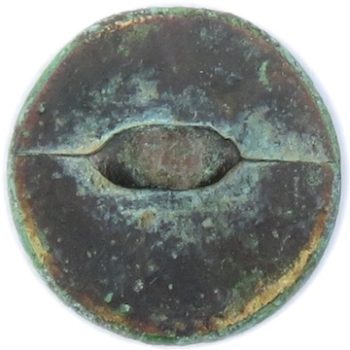
1775-84 George Washington’s Continental Army Commander & Chief Button
Surface Color: A Light Pale Green W/ A Gold Base
Metal: Flat, 1-Piece Raised Design, Gilded Copper.
Size: 14-15mm. Cuff Variant.
Rarity: 1 possibly 2
Variety Type: Federal Eagle & 13 Stripe Shield.
Present Condition: An Excavated Specimen, A Good Planchet Condition Remains, A Strong Raised Pattern Remains.
Obverse Button Analysis: The button was most likely made by a skilled colonial button maker in America just prior to or during the Siege of Boston in 1775-1776. Wen know that John Mc Mullen did pattern Washington’s uniform after British type uniforms, but his Eagle buttons would have been made separately from a skilled colonial Artisan (Most Likely James Trenchard) who was told to use the Eagle as the button’s central design by Washington. Since, there was no past American use (Propaganda or otherwise) of the Eagle symbol used by revolutionaries (the Sons of Liberty) prior to Washington’s use on his military uniform, we can reasonable say that Washington would have naturally taken the symbol from his Grandfather’s Crest in England. This would have naturally been a natural etiquette of respect for one’s own family propagation in this time period. This could have been indirectly seen as a reflection of conquering Roman Army military attributes.
Reverse Button Analysis: This is a one-piece cast mold button with a loop shank. The shank appears to be crushed flat inwards.
This was dug in Taneytown MD. in the 1990’s.
Robert’s Button Notes: Amateur historian, metal detector enthusiast, and button collector Russell Morgan of Gettysburg, was the first to make claim that this button had to belong to George Washington. Morgan used a chronology of military events in-which George Washington was encamped with his army in Taneytown MD. After doing quite a bit of local research, I was able to find a similar larger coat button held by a family that owned and operated a local tavern in upstate New York near Fishkill, which was known to haven been frequented by officers of the Continental Army including, General Knox, Gates, Putnam. Other frequent guests included Lafayette, Von Steuben, John Jay, and alexander Hamilton. This cuff button matches a larger coat button that was found after George Washington had briefly stayed at Hopkin’s tavern-inn by the Van Wyck Homestead in Fishkill, New York in 1776. The logical conclusion is that this cuff button was worn by, George Washington when he was Commander and Chief of the Continental Army from early on in the revolution. According to my insignia research, and with some dated historical information provided by Dale Hawley, we both agree this button has enough evidence to be considered the earliest known “Eagle button,” which pre-dates the Great Seal of America by 10 years.
************* ************* *************
*
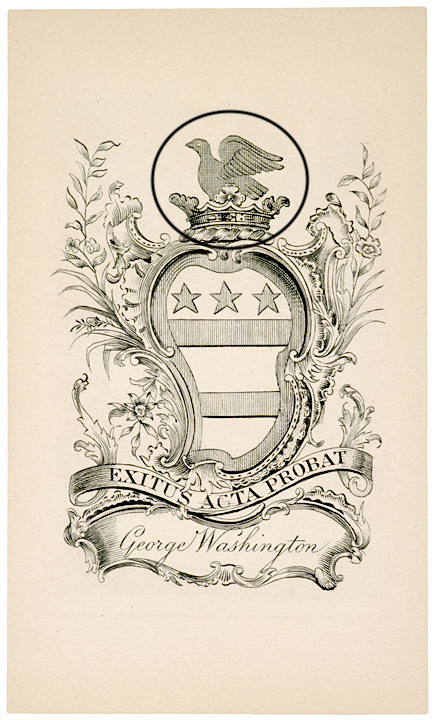 George Washington Book Plate
George Washington Book Plate
************* ************* *************
The Washington Family Eagle
All throughout the world’s history, there was a generational cultural tradition for royal families and aristocratic families to choose representative symbols in regarding themselves in reflection to peers or others in the population. The choice of representative symbols would often times hold specific meanings often reflecting an earned status. These symbols became hereditary family crests, which gave an endowment of authoritative rights to power. Usually, crests of royalty were integrated with religious symbols that granted Divine Authority or reflected a (false) linage to God.
George Washington choose his great grandfathers family Coat of Arms of the Eagle, which was originally used on the Washington family’s mansion in Tring, Hertfordshire, England. This symbol could stand-out above the recognized appointed general officers appointed from the Continental Congress (who were brigadier generals or major generals) who would be naturally given epaulets signature stars numbered 1-3 in accordance to their rank. The Eagle symbol served a duel role for George Washington. First, it reflected the military title of both “General & Commander and Chief” of the Continental Army. Meaning, no other Congressional appointed general would be able to use the Eagle symbol to reflect their general command stature. Second, it was a personal family Crest that he used in his personal life to reflect the Washington Name.
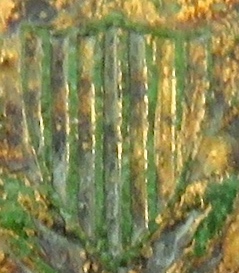 The Shield Stripes on the Shield Was Probably A
The Shield Stripes on the Shield Was Probably A
Mix Symbolism of the Sons of Liberty Association
and the 13 Colonies Washington’s Army Represented
************* ************* *************
The Sons of Liberty Stripes
There is a lot of overlapping symbolism that is associated with the use of the number 13. We know it has significant meaning to the Scottish and English in their society’s culture. Originally, the 13 stripes represented the King of England and his 12 Noble Knights of the Order of the Garter / Thistle. the number held an underlying notion of a 14th century code for a higher morality of chivalry toward our fellow man. A respectability and kindness offered freely through a compassion nature from one person to another. A knight was considered chivalrous when they weirded the power to crush others in the perception of a transgression and then acted in compassion or mercy. This is a purer understanding of mankind limitations and weakness, and being able to overcome ones own lustful desires to become richer or more powerful. These are the virtues that would be personified by James II & VII to his Jacobite followers during the Glorious revolution for his religious percussion in Catholicism, and then carried forward in later years by Prince Edward Stuart during the Jacobite uprisings in 45, which was than brought into the London underground movement against King George II & III of England. The Ouroboros snake in conjunction with 13 stripes or links was commonly used symbolism in 18th Century London underground society clubs like Sir Francis Dashwood’s Order of the Friars of St. Francis of Wycombe and the numerous Hell Fire Clubs that popped-up afterward.
1760’s-1770’s English Underground Society Button
Depicting Several Jacobite Propaganda Symbols
All Symbols Transform Meaning & Predates Sons of Liberty in 1765
************* ************* *************
*
The use of of these symbols and their historical meanings would have been common knowledge to George Washington in revolutionary America. From early on in the Patriot movement groups like the Sons of Liberty would use propaganda symbols to help rally people to their cause. Most of the symbols such as, The Liberty Pole & Cap, The Liberty Tree in Mass., the 13 Stripes, the 13 Stars, the Chain Link, and the (Ouroboros) Rattlesnake, would all transform their original use meanings to fit the Patriot Cause. These symbols were not new to the Gentry Class radicals who were familiar with their historical use through education and Masonic Lodges they were frequented with. A transformation of intent to fit their narrative of Liberty was easy enough while preserving the underlying symbolic meaning. From the Glorious Revolution of James II & VII in 1688, all of these symbols would be used by Jacobite supporters and their underground movement in Scotland, England, France, Italy, and areas of the Holy Roman Empire in their attempt to undermine the Hanoverian rule of England.
George Washington was not of Scottish origin himself, but he did align himself with radical gentry patriots and alienated Jacobites in our colonies prestigious Masonic Lodges. All shared a strong distaste of Parliament enforcement laws and taxes. To the supporters of the Patriot Cause, King George III became a symbol and figurehead of the unequal societal social contract being propagated by Parliament for the unequal political and economic means to prosperity. Historical genealogy shows that George Washington’s parentage were from British decent from Tring Hertfordshire, England, but as with other native born Americans and exiled Jacobites he was given second class social status, which barred American economic prosperity. The “Masonic Network” offered America’s gentry class and radicals an underground society movement highway to promote propaganda symbols for the Patriot Movement throughout the 13 colonies.
George Washington’s Genealogy
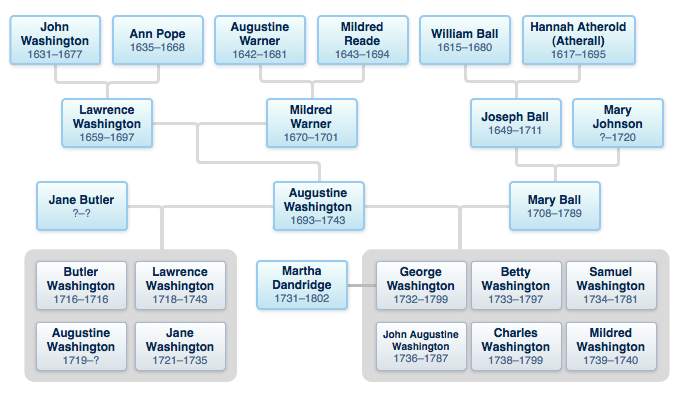 ************* ************* ************* ************* *************
************* ************* ************* ************* *************
*
No one can know for sure when British disscontempt took root in George Washington’s heart, but we know when he met with other colonial delegates for the 1st Continental Congress Convention he was proudly wearing his British Colonel’s uniform. By the Second Continental Congress Convention in the spring of 1775, as with all patriot radicals in the movement George Washington was heightened with moral outrage and was in dire need for a government social contract change. George Washington was selected over several other viable candidates such as, John Hancock because of his life’s accomplishments in the political and military arena. To Continental Congress delegates he was viewed as a respected elder Virginia statesman who had acquired years of service to several political seats in the Virginia Colony. His political service included 15 years of incumbency to the House of Burgesses, as well as maintaining an active seat for Fairfax County Virginia, which he held-up his duties right-up until his acceptance of his Congressional Commission of General’s rank and Commander and Chief of the Continental Army in 1775.
Continental Army Uniforms
George Washington understood that the proper uniform style provided several important aspects to achieving an organizational reflection of a professional military rank structure, and also provided a means of obedient reverence amongst the troops under his command. He understood that his personal deportment would be reflected throughout his General’s Staff as well as throughout the army. As this etiquette projection was a necessity for his own army, it was equally important for him to personify a well organized military force to his adversaries on the battlefield.

George Washington choose the color combination of navy blue and buff for his military uniform. Instead of ordering a well fitted uniform from a garment maker, George Washington used a colonial Virginian who was a sail maker / tailor named John McMullan from Ireland. It is reported that John McMullen was also an enlisted soldier in the Continental Army, and has been acknowledged to have fought in several early revolutionary war battles. For reasons of proper semblance and etiquette, it is reasonably assumed that George Washington asked John McMullan to pattern his uniform after the accepted British military styles of the era. Using the British style as a template, McMullen made slight or minor adjustments in the dress style and switched the primary color from red and gold to navy blue and buff. The navy blue color would be the predominant of the wool jacket, and buff color accented the rise and fall collar, the cuffs and lapels along with the lining. Each side of the lapel displayed a vertical row of either Gilt Zoroastrian Phoenix / Eagle buttons or replacement of gilt flats. Also, one or two buttons would accent each sleeve cuff. The waistcoat and breeches themselves were a matching buff wool with regular flat gilt or eagle buttons.
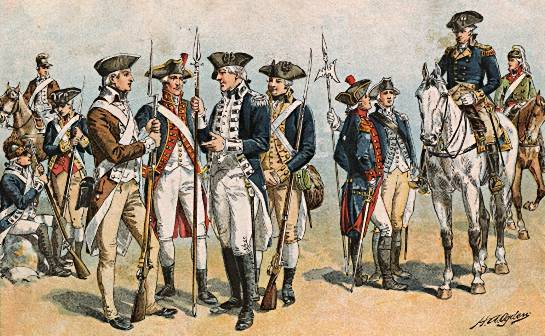
Different Color Uniforms worn by State Militia Regiment Companies
There does appear an attempt by militia volunteers to wear the style clothes as the other members in their company that would make-up their State Militia’s Regiment Lines. This was mainly because the counties in-which they were recruited from had limited choices of bolts of fabric colors. Most families in specific regions would share-in or would be limited in their choice because of the availability of merchant’s shipments of fabric bolts. When someone would volunteer for their state’s militia usually a loved ones or local seamstress would already have the bolt of fabric used by their community and know they style or color combination used.
************* ************* *************
*
Washington’s Early British Militia Experience Leads to Later Etiquette Choices
In the mid-18th century the British Empire and the country of France were in a brewing struggle to gain territorial ownership of New France or the Mississippi River Valley. When George Washington was 10 years old his brother Lawrence became the adjunct of his district with the rank of Major. In between his surveying trips, Lawrence had his younger brother George studying military science and taught him the proper combat and discipline techniques of fencing. Ten years later in 1752, when George was 20 years old Governor Dinwiddie appointed him as a district adjunct of the Virginia militia with the rank of Major. This would officially start his military career.
By 1754, territorial ownership heated up between British American colonists who wanted to expand their frontier land boundaries and the Canadian French who wanted to dominate the trade throughout New France (Louisiana). This territory would be from the Great Lakes to the Gulf of Mexico and the Appalachian Mountains to the Rocky Mountains. In attempt to avoid a military conflict Governor Dinwiddie sent Major Washington with a letter to the French commander demanding immediate evacuation of the territory by the Canadian French Militia. After the expedition, Washington would be promoted to Lieutenant Colonel on March 15th 1754, and given command over 100 regulars and 300 militia. His assignment was to keep the French from expanding their territory, and pushing them back to Canada. After Fort Necessity, Washington would be promoted to Colonel in 1755, and was made Commander of all of Virginia’s Militia. He would serve and fight in the French and Indian War for 4 years. Some of his military accomplishments were publicized in the media like Fort Duquesne, which made him a colonial heroic figure throughout the colonies. During his service as a Colonel in the British Militia Washington grew to resent the attitudes of British officers he had to contend with. He believed they were ignorant of the conditions of colonial guerrilla warfare by native enemies of the region. Also, the British were very condescending and arrogant toward colonial leaders in their military advice and strategies. When Colonel Washington asked to join regular British military service he was refused. Washington would resign his commission in the militia and return to Mount Vernon and advance his political career.
Jacobite Symbolism Conversation Notes to Symbols found on the Button:
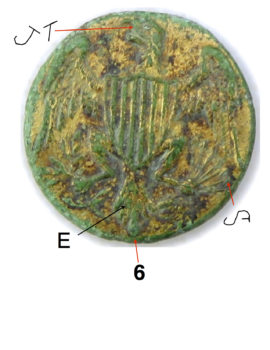
On that eagle button with the 6 you need to write that what makes it so unique is that it’s the only eagle button that is in the factual design of the real great seals of James Trenchard engraving design when he lived in Philadelphia.
fireplace, helmet, trench. design
Below is just some Historical Notes I use when writing.
Scottish Influences
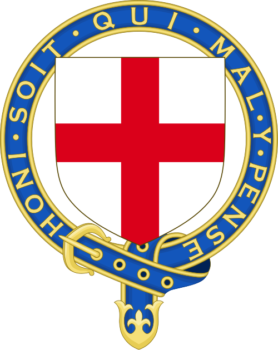
King Edward III Most Noble Order of the Garter
The Enlightened Visionaries were able to incorporate and propagate the exemplified nature of man’s common decency of this 14th century chivalry idea, and then embed it’s message within an 18th century symbol for colonial equal rights. As God is probably the true origin through religion, this chivalrous idea was most likely taken from Edward III’s Most Noble Order of the Garter (1348) and Scotland’s King James VII’s modern Order of the Thistle in 1687. To the Enlightened Revolutionaries their use of the 13 stripes themselves would act as a code of conduct to help provide a foundational cornerstone of man’s goodness toward one another acting hand-in-hand with the colonies revolutionary cause. There cornerstone idea of chivalry should be viewed as laying the seedlings for our future republic with an underlying principle of man’s virtue for goodness amongst one another. Hence, this is the underlying foundation to the real subcutaneous meaning, “Don’t Tread On Me.”
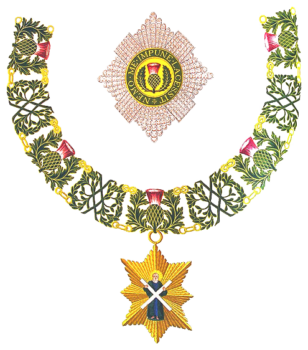
Insignia of a Knight Companion of The Most Ancient and Most Noble Order of the Thistle
As we use the words, “God Bless” for our actions and misconceptions towards one another, we as a species are continually tested in our daily charitable actions of forgiveness towards one another’s weaknesses. By the Enlightened Visionaries using these morality foundations of chivalry, it provides a path for our post-revolutionary country to move forward as a nation toward self enlightenment in generosity towards one another. The New Era’s Ideals presented in the Great Architects Design in the post-revolutionary times shows our citizens a path without the fear of societal destruction as other cultures succumbed to in the world’s past history.
We The People as a New Republic no longer need the Rattlesnake to devour it’s own tail by mankind’s own natural evil instincts and devices. We can now unite (E. Pluribus Unum) as one and face our own enemies within ourselves and without and have the foresight to be cutely aware. When Tread upon, we can give the warning of the Rattlesnake’s fork tongue hiss in the observation of mankind’s natural lineage of paterfamilias hereditary evil. This enlightenment is for all people of the world; as I write this meanings not as a high society educated religious person, but as a cobbler carpet cleaner who understands the nature of God’s simplistic message is for all men regardless of their stature.
As we peel away each layer of the multi-meaning illusion, we see the 13 stripes has many representative historical meanings which are all interwoven together to make the fabric we perceive for our own reality. For the patriots of 1775/1776 the 13 stripes symbolized an elementary meaning that each stripe reflected each one of the known 13 colonies. This fundamentally provided unity for all colonists of different colonies.
To understand the intended meaning and usage by the 18th century Enlightened Visionaries we have to look at earlier significances in it’s use which derive the meaning of the symbol’s composition from it’s origin’s use. Some rudimentary significances such as, the 13 stripes can easily be paralleled to the King of England and the Prince of Whales each choosing 12 knights to make 13 in their own knights Noble Orders. Transferring the Noble Order’s mission statement to the Sons of Liberty foundational use is a clear parallel. The embodiment of religion though the patron St. George and Saint Andrews is a clear religious representation of the 12 apostles who followed the savior Jesus Christ (13). The early Anglo-Norman Maxim which was later adopted by the British Order’s as their emblem, Hon* Soit * Qui * Mal * Pence literally means, “Shame on him who thinks ill (Badly) of it.” Through the “Order of the Thistle,” the Scottish culture was able to harness the Celtic’s character attributes of bravery, devotion, durability, strength, and determination. Is this not what the American flag stands for even in today’s contemporary time? All these subcutaneous illusions provided by our revolutionaries are well thought out high-minded principled ethical undercurrent meanings too help provide a more virtuous foundation to a revolutionary cause through the symbolic 13 stripes within our flag.
the Phoenix is a Stuart thing going back to Mary queen of Scots doing Phoenix in the octogon tapestries by hand.
Yes the design appears it could predates the great seal design of 1781.
The design represents the House of Stuart and the rebirth of the Scottish in America. Washington was not that important, even as the top General it would never be his arms in any shape or way! The symbolism is sovereign to the Bonnie prince Charlie. His birth song is the Phoenix and the E being on the right is only a Kings make of sovereignty. But it was so often used by Robert guy and the guild that it evolved in to a symbol of US sovereignty that mean the right to rule under God’s authority.
-So does it mean it’s older that the US great seal or was predesigned!
There are several journal and early newspaper articles of the era chronicling the actions of the Continental Army along with descriptive reference to George Washington’s uniform having gilt eagle buttons, not really understanding this was in actuality a Zoroastrian Phoenix. We can conclude 2 things from these journalist accounts. First, that if correct he would have had a set around the time of the Battle of Cambridge or even some time shortly afterward. This introduction of the Zoroastrian Phoenix insignia would have been 12 or 13 years prior to the introduction of the Great Seal of the United State’s eagle in 1787. Second, by publicizing the design as mistakenly the Eagle could have perpetuated the Allusion.
George Washington was very deliberate in his thought and actions, his knew that his choice of insignia would have to represent many facets of statuesque nobility and authority in a military prominence. For apparent reasons he could not simple adopted the Rattlesnake insignia of the patriots because it’s meaning and use were not compatible for the authoritative framework needed to represent dignified command position. The Rattlesnake symbol was a convoking tool of the propaganda war being waged by the Enlightened Revolutionaries through their Masonic Network, Dr. Benjamin Franklin’s active journalism through different media sources, and the Sons of Liberty street activists. Meaning, the rattlesnake symbol would not fit a military hierarchal framework which would be needed to represent the Commander and Chief of the Continental Army, but is perfectly suited for a rally-cry revolutionary war flag on the field of battle. Washington clearly understood all the dynamics of symbolism, and he needed an appropriate symbol which could be used in a military venue to reflect the grand stature of a high ranking military officer. This insignia would have to be of prominence supremacy and display stature and semblance of order.
*************
Closing:
 1774-1775 Washington / Curtis Tea Urn Depicting an early cross of a Phoenix & Eagle W/ Scottish Bow & Sprigs.
1774-1775 Washington / Curtis Tea Urn Depicting an early cross of a Phoenix & Eagle W/ Scottish Bow & Sprigs.
Often misconstrued by Washington historians as a “Griffon” which is a Lion’s Body and Eagle Head
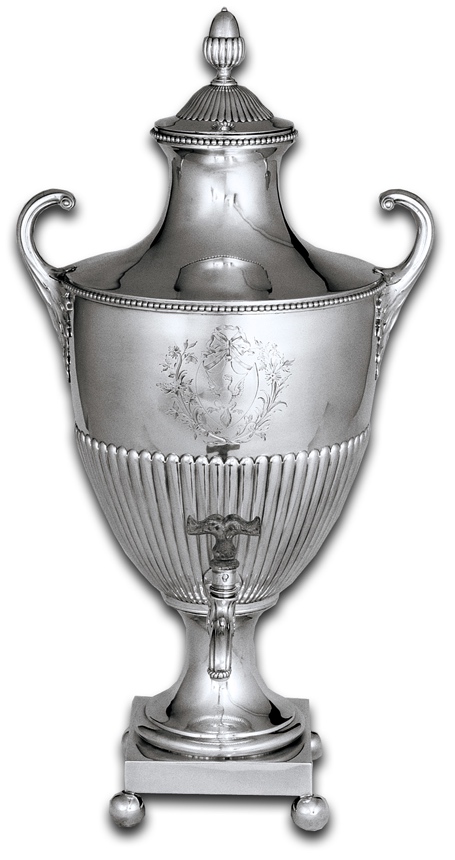 In the late 18th Century the Tea Urn was the centerpiece of the table. The Silver tea urn consists of three pieces:
In the late 18th Century the Tea Urn was the centerpiece of the table. The Silver tea urn consists of three pieces:
The pedestal, body, and cover. Coincidence: By using a cross-match of George Washington’s Hot Water Urn and
his book plate we get the Advertised Sold designs for Washington Mourning Buttons.
The design on the silver water warmer Ribbon, eagle and shield has nothing to do with the Rev War designs associated with George Washington or his buttons it is simply an armorial crest of the family John Parke or Curtis family this is associated with Martha Washington’s first marriage before she married George Washington that is why Mount Vernon has the piece. Regards, Dale
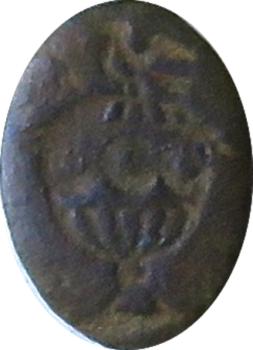 *
* 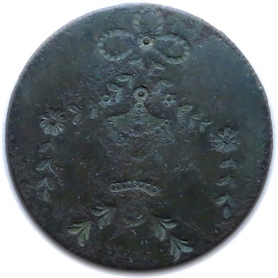 *
* 
Even though there appears to be three known variations to button number 1, these are the only designs which were recorded in 1799/1800 mourning buttons tributes to George Washington for his death. The “Urn” was used probably as early as the 1760’s forward on buttons for mourners.
Robert it would not be a far reach to put the shield on the eagles chest from the silver water warmer of the Parke-Curtis family crest then apply the sons of Liberty stripes to the shield then add the three arrows of Scotland’s archers and of course the olive branch for the desire of peace or reference to the culture of Rome. This way George Washington shows respect to all or most of the associations in his life and creates a symbol both personal and Patriotic but that is not what I believe came about although it is an amazing coincidence the symbol of America shares a connection to the format I just laid out. The reality of our symbols birth or design for America’s Great Seal or both War image and national crest is assembled by others unaware of Washington’s connection within his personal life to these pieces put together to form the whole. Is that a coincidence or is it the hidden hand of the Grand Architect? The matrix behind the reality and that observed but not seen of its entirety. Hmmmm.
Conversation Drafting notes:
Robert,
My father in laws authentic great seal button from George Washington’s factual uniform confirms that the design was predesigned. That button fell off his coat while a guest at the Hopkins tavern that was NY state militia headquarters
Thank you Lt. Col. Milburn,
A New Gift Granted to you because of your kind words of Appreciation & love, devotion to seeking truth, and hard core research to the button collecting community for no reward. As always you touch my heart with your clarity and understanding of complex subjects and then provide your thoughts in a clear spoken language. So, let me give you Truth since you understand the complexity of how the Bald Eagle was actually given to our country. The Eagle chosen by George Washington was not the Majestic bird that came from our skies. It actually comes from his Family Crest in Tring, Hertfordshire, England. The Washingtons used the Eagle as representation of their family Crest. This Eagle was adorned on the outside their family’s Manor.
As Dale mentioned to me a short time ago, its a small world, it was Princess Diana’s family who helped the Washington’s when they fell on hard times. Anyway, George Washington’s button insignia on his Continental Army uniform in the American Revolution carried this symbol as a Proud Family Crest as a Standard in the war against the British. I won’t dive in deeper, you can if you choose. Start putting the pieces together as I did, or wait for me to post it all. In a chronologically timeline, this button made by James Trenchard for use on George Washington’s Continental Army uniform was years prior to the insignia’s introduction on the Great Seal purposed by William Barton in 1787, and two more years before its official adopted use by the U.S. Federal government in 1789. Meaning, this button would be the EARLIEST example of the design of the Great Seal of the United States! Yes, the Eagle insignia is Best suited for George Washington for two overlapping significances. Washington is the Farther of our Country, and our Country uses his Family’s Crest as representation. The original 13 stripes ( without a Presidential horizontal line) on the button’s shield is reflective of his (1) Revolutionary Patriot Flag of his (2) Scottish-Rite Strict Observance brothers in Fredericksburg VA, and the Son’s of Liberty Rebel Patriots. All are intertwined together on this George Washington Revolutionary Eagle button! Now you know the truth, and I am now forced by this email to you to place the Truth of the Reality in my websites Library of buttons. You have a beautiful soul Bob. Your military service is impeccable and has been noted by the service men at your side in our country’s times of battle calls. Your example of kindness and respectability is commendable. Enjoy the Truth, Your Humble Svt. Robert J. Silverstein
*******
Eagle Notes
The artist depiction of Amos Dolittle’s Medium engraving of “A Display of United States of America” was of interest to me in my research. Since this was printed in 1791, there could have been a cross-match to William Rollison’s Eagle buttons made for the inauguration. We know for a fact that Washington was specific in asking for the Eagle design from General H. Knox in 1789 for the inauguration because he already had used them from 1775 forward. Knox was even known to have talked about Eagle designs back in tavern meetings as far back as 1776. He thought there should be a Ribbon as award metals of valor. We see this materialized years later with different Eagle designs from various nationalities for officer’s metals for the Sons of Cincinnati. Hummm the Eagle is worn by Washington the father and are they Sons of Cincinnati or Washington? Truth be told by my tongue when I do that section. General Cincinnati was an allusion of what a role model life should offer these military men. A guide to 18th century landowners who could proper off land as barons do in Europe.
Knowing that their was one other coat Eagle W/ Striped shield button that was dated to Revolutionary War period that was off of George Washington’s Commander & Chief’s uniform comes from a stay at the tavern in Fishkill, New York. George Washington was confirmed by myself as having stayed and signed the inn’s book as a visiting patron. Immediately after his departure the owner’s family found a coat button in his room immediately after his departure. The button to this day was kept by the family and saved through the generations along with the visitors log and the button style eagle and shield matches mine – exactly. George Washington probably didn’t realize in 1775, he would have to assume the responsibility of the Pater Patria one day.
English Sunburst Pattern
No matter what, the same symbolism is to the Garter and their 8 pointed blazing star they wear on their jackets is the same symbolism found on the Webb Horn within the flag 8 pointed star together with the stripe flag. The Order followed the belief of the symbolism of the Dog Star. Hummm thinking the relational value. This is were Freemasonry adopted this history symbolism of the Dog Star found on the liberty button and also because the Stuarts Kings Charted FREEMASONRY to keep their bloodlines in check!
GW Uniform Button Research: Some quick research does shows that George Washington had stayed in taneytown, MD during the American Revolution, his men were reportedly encamped around the town. The digger claimed he had found numerous colonial items, flat pewter buttons, several intertwined U.S.A Continental Army buttons; along with an assortment of later date Army buttons.
